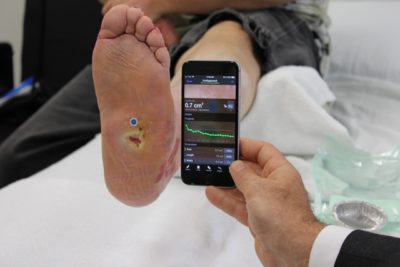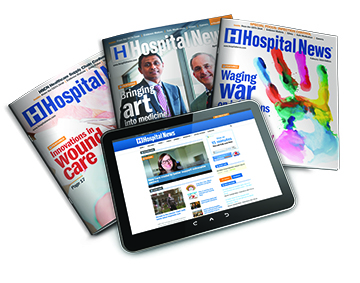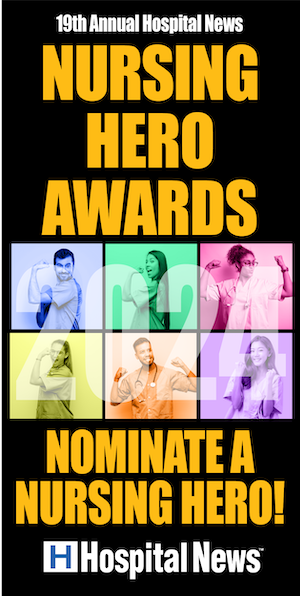New app piloted in Montreal hospitals gives accurate, touchless wound measurements
By Julie Robert
Monitoring a wound is critical, especially in diabetic patients, whose lack of sensation due to nerve damage can lead to infection of a lesion and, ultimately, amputation. Clinicians and healthcare professionals at the McGill University Health Centre (MUHC) and other hospitals believe that the use of a new app, Swift Skin and Wound™, which accurately measures and charts the progression of skin wounds, could potentially have a significant impact on clinical management and patient outcomes.
“Many of my patients are diabetic and are dealing with slow-healing foot ulcers; this app offers a way to clearly document and quantify the size of the ulcer to ensure it is actually healing, and if it is not healing, I can change strategies,” says Dr. Greg Berry, Chief of Orthopaedic Surgery at the Montreal General Hospital of the MUHC and Chief and Mueller Chair of the Division of Orthopaedic Surgery at McGill University. “I can concretely show them that what we are doing is working. They get on board and are more devoted to the treatment plan because they see it is successful,” he adds.
The app was the idea of Dr. Sheila Wang, a resident in dermatology in the Department of Medicine at McGill University and a scientist at the Research Institute of the McGill University Health Centre (RI-MUHC). Early in her medical career, she saw that there was a problem with the way that wounds were measured and went on to co-found the company, Swift Medical, which developed the smartphone software.
“When I was in medical school in Toronto in 2013, I noticed doctors and nurses relied on rulers to measure patients’ wounds,” she says, “resulting in widely varied descriptions, depending on who was doing the measuring. It didn’t seem very exact, so I decided to do something about it.”
Dr. Wang was first author on a paper, published in the scientific journal PLoS ONE, which shows that the app provides measurements of wounds that are more consistently accurate than those taken by using a ruler. They are as accurate as another measuring tool known as a digital planimeter, but using the app allows medical personnel to share and track wound information. She also recently published an article in the JMIR Dermatology that focused on understanding the type and location of skin and wound lesions found in long-term care facilities and mapping these on the body.

“The app allows different health care workers to collect images and data from each patient and to follow the wound over time, something which is very important in the Northern regions, where there is a high turnover of staff,” adds Dr. David Dannenbaum, Faculty Lecturer in the Department of Family Medicine at McGill University.
“This is one of the first wound measurement apps to be developed,” says Dr. Wang. “Swift Skin and Wound is now used to monitor over 100,000 patients in over 1,000 healthcare facilities across Canada and the USA. Its ability to transform wound care, even when used by those with little experience, will make it an invaluable tool for health care workers.”
Julie Robert is the Communications Coordinator – Research at McGill University Health Centre.




